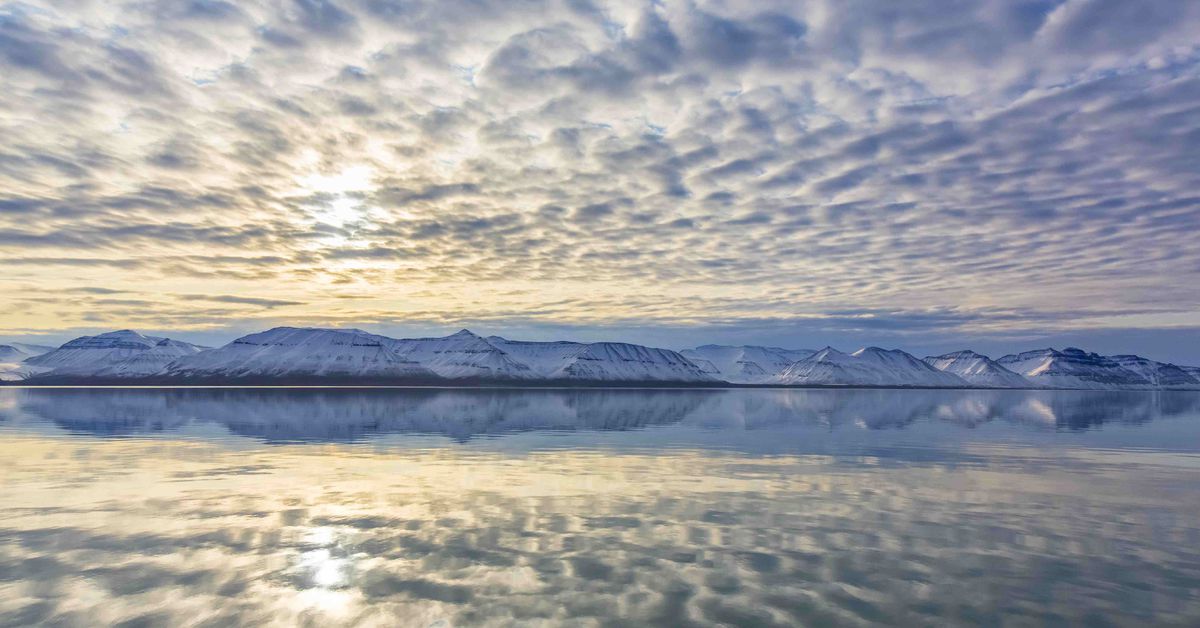Microplastics from laundry are flooding into the Arctic
Source: The Verge added 12th Jan 2021Polyester fibers are making their way from laundry machines in North America and Europe all the way up to the Arctic, according to a new study. Synthetic fibers made up a whopping 92 percent of microplastic pollution found in Arctic seawater, of which polyester was the most common.
That means that textiles, laundry, and wastewater are likely big culprits when it comes microplastics polluting the world’s oceans, according to study authors. The polyester fibers they found in the Arctic are the same size as fibers found in water from laundry machines and wastewater treatment plants. Much of it is drifting into the Arctic from the Atlantic ocean, the findings suggest — which points to North America and Europe as the source of those fibers.
“What you and I wear, how we wash our clothes, and what we buy at the clothing store is really having profound consequences for an area, many thousands of kilometers from our communities,” says Peter Ross, lead author of the study published today in the journal Nature.
Scientists are still trying to understand what all those microplastics mean for the Arctic, its marine life, and communities that live there. Ross says he wanted to study microplastics along the entire water column — from the seafloor to the surface — in part because it’s where a lot of sea life looks for food. One concern is that the plastics can obstruct animals’ intestines when they eat them, and make them feel full even when they’re not getting the nutrients they need, according to Ross. There are also still questions about how the chemicals found in plastics could affect animals or the people who eat them. Indigenous Inuit have already coped with pollutants like DDT that move north from thousands of miles away. The same pattern appears to be happening with microplastics, Ross says.
Ross and his colleagues studied seawater samples from 71 locations across the Arctic — a broader look at the problem than previous studies. They found three times more microplastic particles in the eastern Arctic than in the west. They also saw that fibers found further west were shorter and more weathered, suggesting that they had traveled there from the east. That’s how they were able to determine that the Atlantic ocean feeds more plastic pollution to the Arctic than the Pacific. It also signals that the notorious Great Pacific garbage patch probably isn’t contributing as much to the microplastics problem in the Arctic as previously thought, according to Melanie Bergmann, a marine ecologist at the Alfred Wegener Institute Helmholtz Centre for Polar and Marine Research in Germany who was not involved in the study.
Bergmann and other researchers have found microplastics in Arctic snow, ice, and water. But distinguishing between types of plastic and their sources has been more difficult in the past. Ross’ study uses technology called Fourier transform infrared spectroscopy (FTIR) that became available in just the past few years. It can compare the infrared signal of a mystery particle to a library of over 250,000 materials to identify whether fiber likely came from a polyester textile or, say, nylon fishing gear.
“Simply documenting microplastics in the Arctic is interesting, but without it leading to source identification, it’s not going to allow managers, decision makers, industry, and other parties to actually solve the problem,” Ross says. Each time we run a washing machine, hundreds of thousands of microplastics can find their way into the environment by taking a ride on wastewater, previous research has found. Some brands have already started making fabrics that shed fewer fibers when they’re washed and that alone can make a tremendous difference, Ross points out.
“If we are finding microplastics and especially fibrous microplastics in waters of this seemingly pristine location, that emphasizes to us that we need to take action on land,” says La Daana Kanhai, a marine scientist at the University of the West Indies who has also studied microplastic pollution in the Arctic and discovered polyester fibers in sea ice.
“The more we look, the more we realize just how we have contaminated the farthest corners of the planet with microplastics,” Ross says.
There’s even more plastic out there that scientists still can’t see, both Ross and Bergmann acknowledge. The new study excludes plastic particles smaller than 10 microns. “There’s much more out there, very likely,” says Bergmann.
brands: ARCTIC Atlantic New other Planet POLAR Ross media: 'The Verge'
Related posts
Notice: Undefined variable: all_related in /var/www/vhosts/rondea.com/httpdocs/wp-content/themes/rondea-2-0/single-article.php on line 88
Notice: Undefined variable: all_related in /var/www/vhosts/rondea.com/httpdocs/wp-content/themes/rondea-2-0/single-article.php on line 88
Related Products
Notice: Undefined variable: all_related in /var/www/vhosts/rondea.com/httpdocs/wp-content/themes/rondea-2-0/single-article.php on line 91
Warning: Invalid argument supplied for foreach() in /var/www/vhosts/rondea.com/httpdocs/wp-content/themes/rondea-2-0/single-article.php on line 91
